Overview
This article lovingly explores essential strategies for navigating the B2B sales cycle, highlighting the significance of understanding each stage, from prospecting to closing. We recognize that small business owners face unique challenges, and this guide aims to address those concerns. By outlining actionable techniques—such as automated outreach to boost lead generation, personalized proposals tailored to specific needs, and effective closing strategies—we aim to empower you. These approaches not only enhance conversion rates but also contribute to improved revenue performance for your business. Together, we can achieve success in your sales journey.
Introduction
Navigating the complexities of the B2B sales cycle can feel daunting for many small business owners. We understand that with various stages to master—from prospecting to closing—grasping the nuances of each phase is crucial for driving your success. This article explores key strategies designed to empower you, helping to streamline your sales processes, enhance conversion rates, and ultimately foster long-term client relationships.
But what happens when traditional methods fall short? Together, let’s discover how innovative approaches can transform challenges into opportunities, ensuring a thriving sales journey in today’s competitive landscape.
Wayy.ai: Streamline Your B2B Sales Cycle with Automated Outreach
At Wayy.ai, we understand the challenges small business owners face in today's competitive landscape. That's why we harness cutting-edge AI technology to automate the outreach process, allowing you to focus on what truly matters—your core operations.
Imagine establishing over 60 target client connections each month without needing extensive selling knowledge. This innovative platform not only saves you valuable time but also significantly boosts the effectiveness of your outreach efforts. In fact, our automated follow-ups can raise your response rates by an impressive 250%.
With these enhancements, your business can and stimulate growth more effectively. Think about it: by incorporating automated outreach, you can expect a remarkable increase in your engagement rates. Prospects reached within five minutes are ten times more likely to convert, transforming the traditionally challenging b2b sales cycle into a streamlined, data-driven process.
Wayy.ai is an essential resource for small businesses like yours, seeking to thrive in a competitive environment. And with our subscription plan priced at just $99 monthly, you’ll find an economical solution that pays for itself through improved prospect generation and client connections. Together, we can achieve success and help your business flourish.
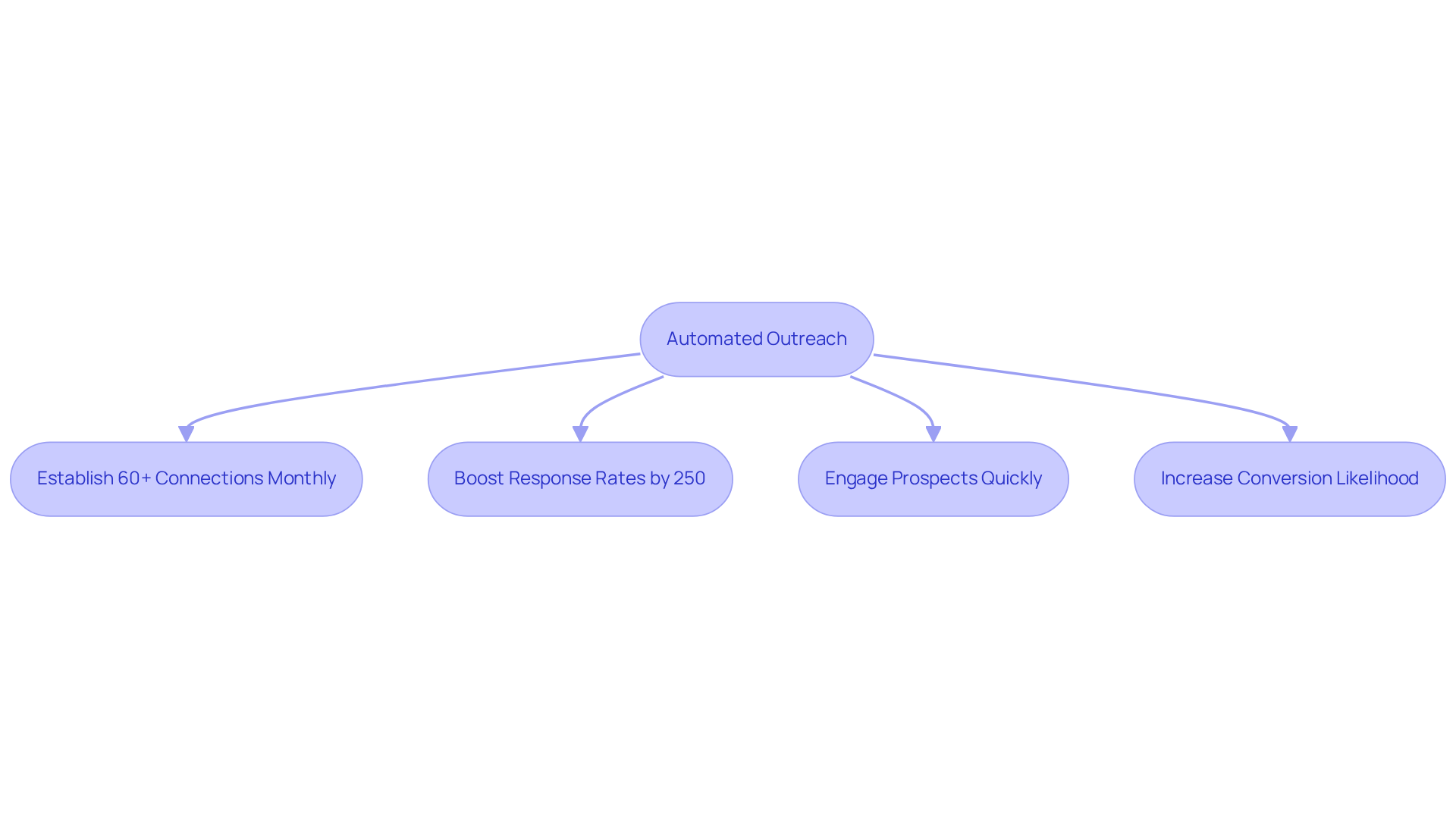
B2B Sales Cycle Stages: Key Phases Every Owner Must Navigate
The structured journey of the B2B sales cycle typically includes several critical stages: prospecting, lead qualification, needs assessment, proposal, negotiation, and closing. Each phase requires tailored strategies and actions to effectively guide prospects toward making a purchase decision. Understanding these stages is essential for small enterprise owners, as it allows them to to meet the unique needs of their prospects at each step.
- Prospecting: This initial stage is all about identifying potential clients. We understand that small enterprises often face challenges in outreach. Tools like Wayy.ai can help automate this process, enabling businesses to establish over 60 target client connections each month.
- Lead Qualification: Once prospects are identified, assessing their potential becomes crucial. This means determining their fit based on criteria such as budget, authority, need, and timeline. Engaging decision-makers early can significantly reduce the commercial cycle, a point emphasized by industry specialists.
- Needs Assessment: Understanding the unique needs of each prospect is vital. This phase necessitates effective communication and collaboration to gather insights that will inform your proposal.
- Proposal: Crafting a compelling proposal that directly addresses the prospect's specific needs can differentiate your business. Personalization is key; after all, 84% of B2B decision-makers start their buying journey with a referral, highlighting the importance of tailored content.
- Negotiation: This stage often involves discussions around pricing and terms. Persistence in follow-ups is essential; teams should aim to reconnect within 24 hours of initial outreach to maintain engagement. Interestingly, only 11% of representatives request referrals, even though 91% of clients are willing to provide them, as pointed out by industry experts.
- Closing: The final phase is where the deal is finalized. Effective closing strategies include addressing any last-minute objections and reinforcing the value proposition.
By mastering these stages, entrepreneurs can navigate the B2B sales cycle more effectively, which leads to improved conversion rates and enhanced revenue performance. As marketing experts suggest, grasping the subtleties of each stage is crucial for success in the competitive B2B environment. Together, we can achieve these goals, and we are here to support you every step of the way.
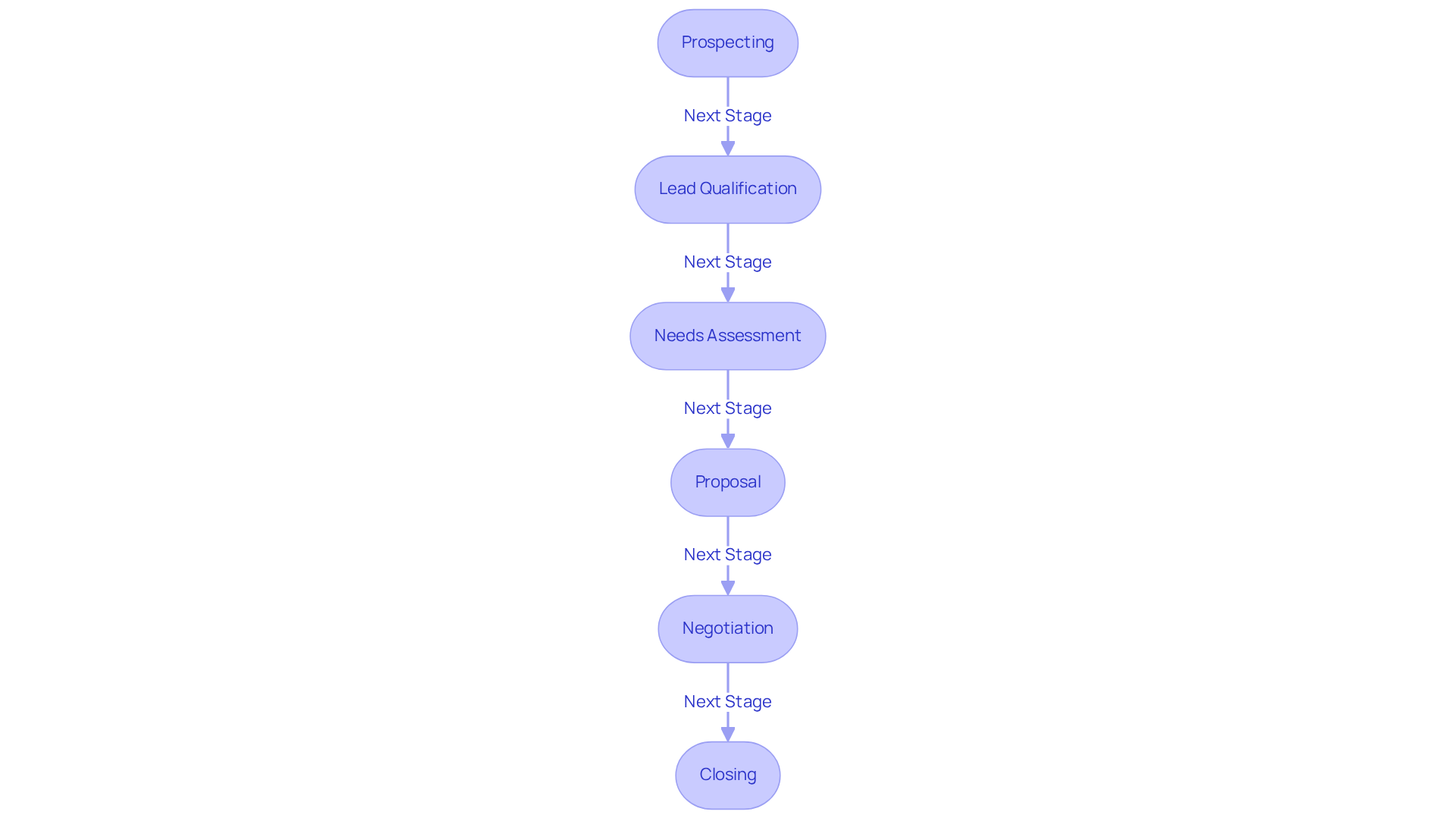
Lead Qualification: Essential Techniques for Small Business Success
Efficient prospect qualification is essential for small enterprises striving to enhance their revenue results. We understand that navigating this process can be daunting, but utilizing the BANT criteria—Budget, Authority, Need, and Timeline—can empower owners to assess potential customers in a systematic way. By applying these evaluation methods, you can prioritize high-quality prospects, ensuring your marketing efforts are focused on those most likely to convert.
Consider this: companies that engage in scoring prospects often see significant improvements in their conversion ratios. Focused inquiries help identify potential clients who not only express genuine interest but also have the ability to buy. By concentrating on these promising prospects, small enterprises can streamline their sales procedures, ultimately leading to enhanced efficiency and success in achieving sales objectives.
Did you know that, according to the Content Marketing Institute, 85% of B2B companies view prospect generation as their most crucial marketing objective? This statistic underscores the importance of effective prospect qualification. Furthermore, businesses that leverage marketing automation to nurture potential clients experience an impressive 451% increase in qualified prospects. This highlights the value of adopting scoring methods.
It's also important to recognize the financial implications: the typical cost of a B2B sales opportunity ranges from $31 to $60. This variance emphasizes the necessity of efficient opportunity qualification and scoring. Alarmingly, 79% of marketing qualified leads (MQLs) never convert into revenue due to inadequate lead nurturing. This stark reality further illustrates the critical need for effective lead scoring and nurturing procedures. Together, we can implement these strategies to not only but also foster lasting relationships that drive your business forward.
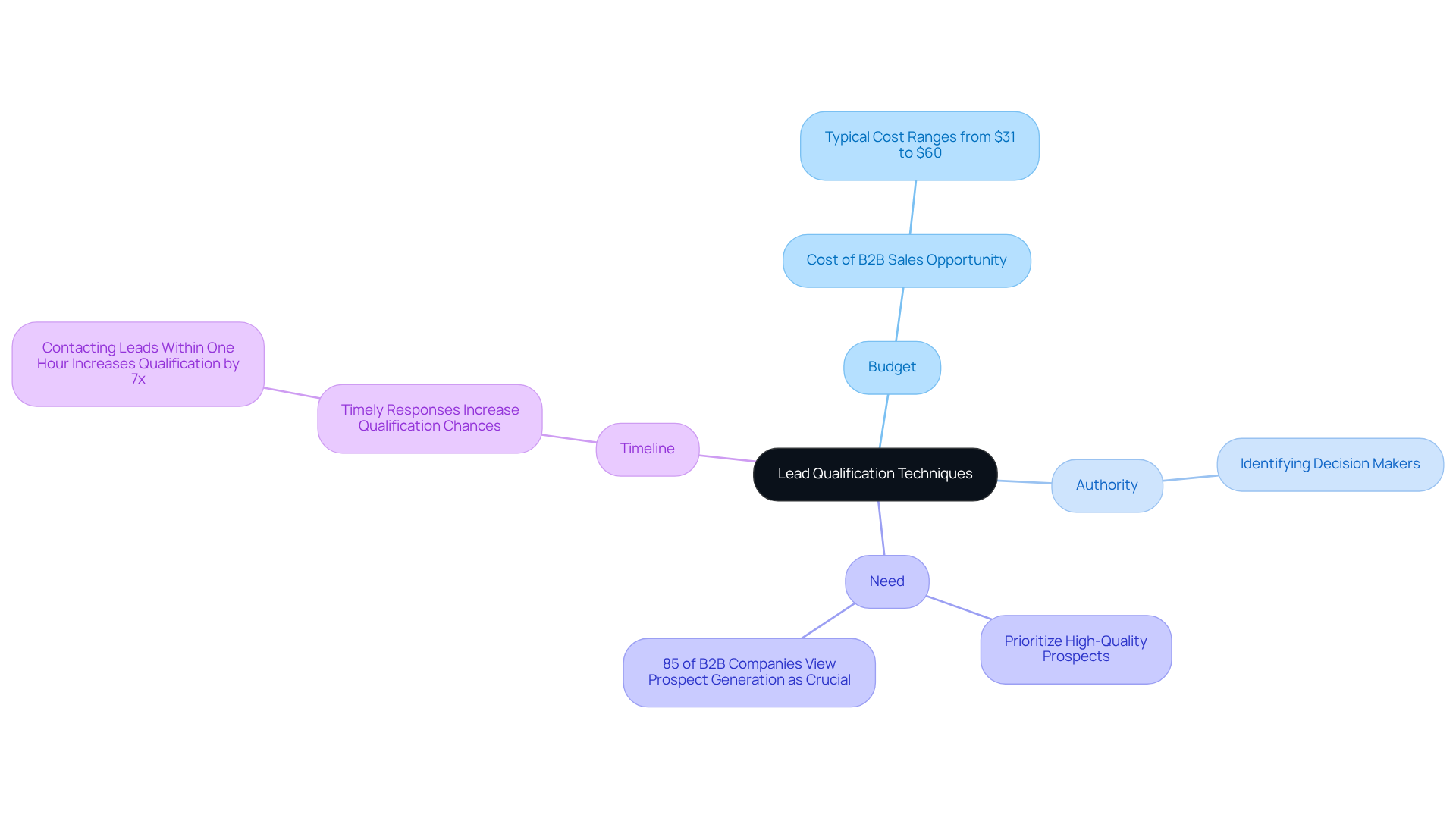
Overcoming Sales Objections: Strategies for Small Business Owners
To effectively handle objections in commerce, we understand that owners of modest enterprises must proactively prepare by anticipating common concerns and crafting clear, concise responses. Have you ever felt overwhelmed by objections? Methods like active listening are essential; they enable you to thoroughly comprehend your prospect's viewpoint and affirm their concerns. This nurturing approach not only fosters trust but also opens the door for meaningful dialogue.
Providing evidence-based solutions, such as case studies or testimonials, is crucial, especially considering that 49% of buyers cite technical white papers and case studies as critical to their decision-making process. Research shows that organizations excelling in achieve a 26% premium on deal values, underscoring the importance of addressing objections thoughtfully. Furthermore, with B2B buyers spending only 17% of their total purchase journey in direct contact with potential suppliers, it is vital to make the most of these interactions in the B2B sales cycle.
By transforming objections into opportunities for engagement and focusing on building your trusted advisor status—which correlates with a 61% higher probability of winning deals—you can significantly enhance your chances of closing deals and building lasting relationships. Together, we can navigate these challenges. Additionally, utilizing platforms like Wayy.ai can assist you in addressing sales challenges through customized outreach strategies and automation, ultimately enhancing your client acquisition process. Remember, we’re here to support you every step of the way.
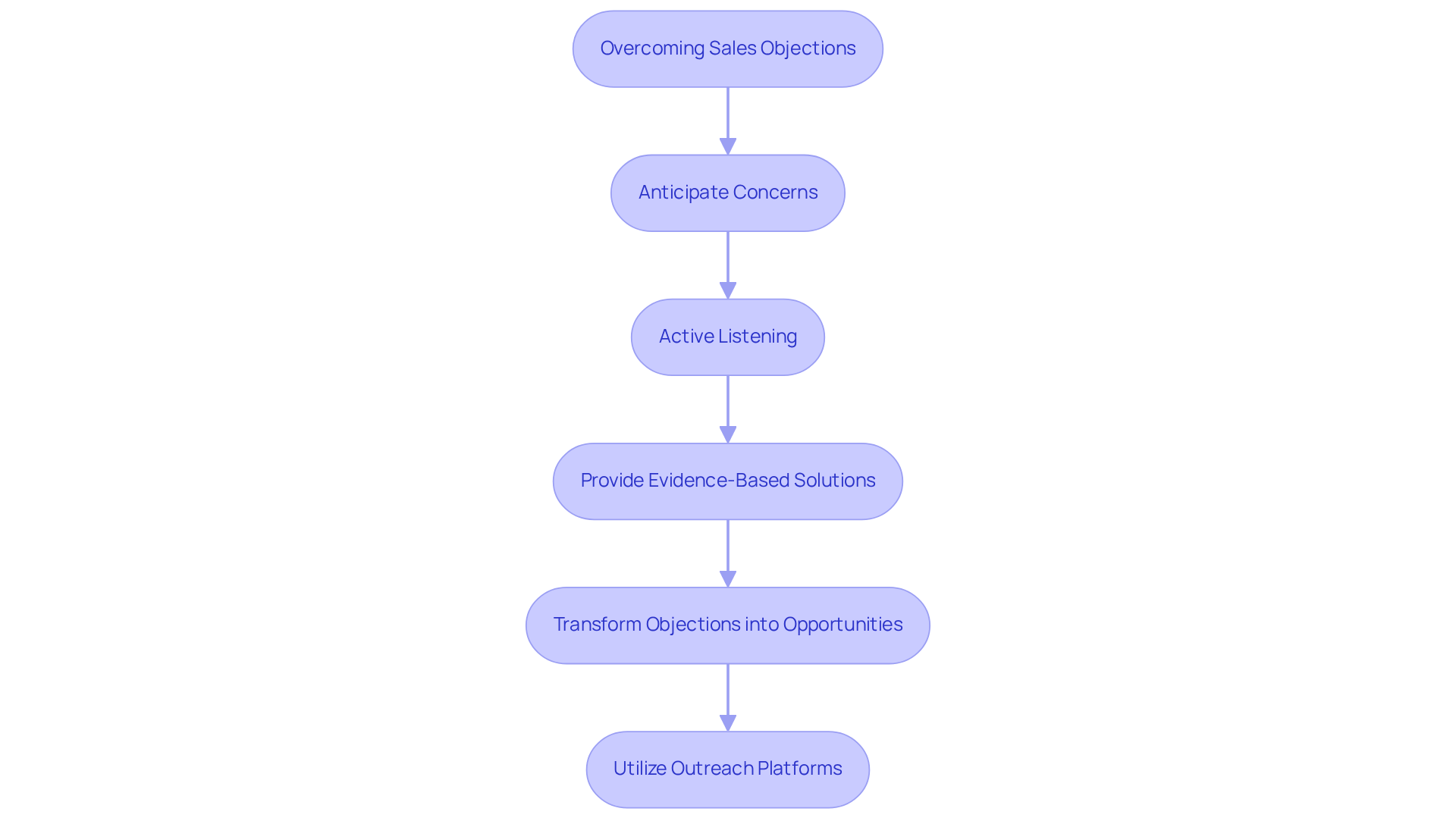
Effective Closing Techniques: Turning Prospects into Customers
Effective closing techniques are essential for transforming prospects into loyal customers throughout the b2b sales cycle. One particularly effective method is the assumptive close, where the salesperson approaches the conversation with the belief that the prospect is ready to make a purchase. This technique not only streamlines the dialogue but also encourages quicker decision-making.
Another impactful strategy is the urgency close, which creates a sense of immediacy, motivating prospects to act without delay. Research shows that instilling urgency can significantly boost closing rates, with some studies revealing an increase of up to 30% in conversions when urgency is communicated effectively.
As small business owners, integrating trial closes throughout your discussions can be incredibly beneficial. These strategic questions, such as "How does this solution align with your current needs?", help gauge the prospect's readiness. This approach not only assesses interest but also allows you to adjust your pitch based on the feedback received, ensuring a more personalized experience.
By embracing these techniques, you can enhance your closing rates and stimulate revenue growth. Ongoing prospecting, as emphasized by Brian Tracy, is essential in the b2b sales cycle to ensure that your revenue pipeline remains full, providing you with more opportunities to finalize transactions. Ultimately, mastering these closing strategies can lead to more and foster long-term client relationships.
Moreover, platforms like Wayy.ai demonstrate how automation can simplify client acquisition, empowering small business owners to enhance their revenue processes effectively. Together, we can navigate these challenges and achieve success.
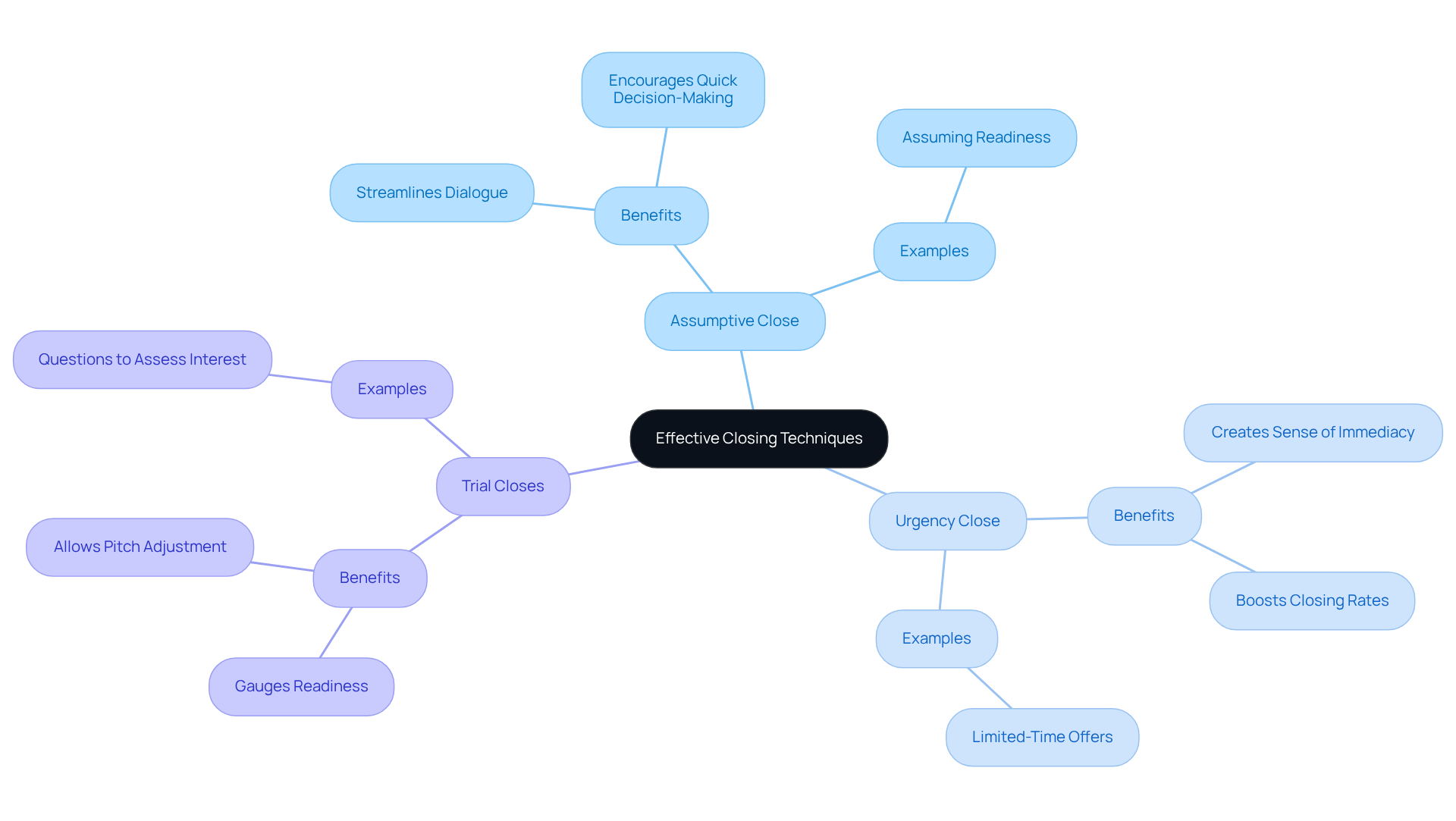
Lead Nurturing: Building Relationships for Long-Term Success
Lead nurturing is vital for building meaningful relationships with prospects through consistent communication, personalized content, follow-up emails, and targeted offers. As small business owners, you can leverage tools like email marketing and social media to keep your brand visible and engage your audience. Did you know that cultivated prospects can make almost 150% more purchases than those who are not nurtured? Additionally, businesses that focus on cultivating prospects generate 50% more revenue while reducing expenses by 33%. This highlights the financial benefits of establishing trust over time.
Effective email marketing strategies can significantly enhance your conversion rates. Nurturing emails achieve an impressive click-through rate of 8%, compared to just 3% for general emails. By prioritizing personalized communication and utilizing marketing automation tools, you can guide your prospects through the B2B sales cycle, which increases the likelihood of conversion when they are ready to make a purchase. Together, we can apply these to not only boost engagement but also position your emerging enterprise for long-term success within the B2B sales cycle in the competitive landscape.
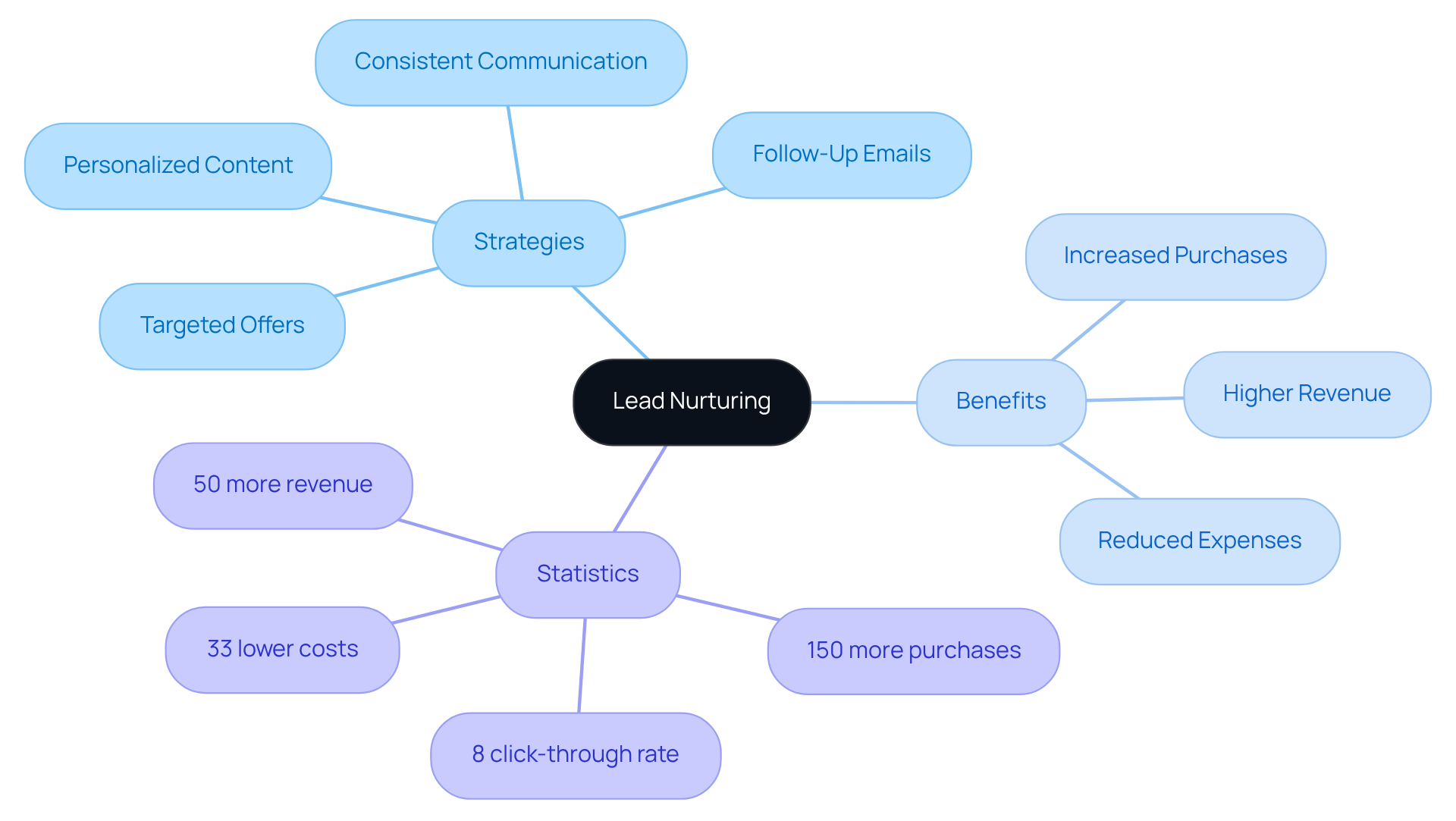
Sales Performance Benchmarking: Measure Your Success Against Industry Standards
Sales performance benchmarking is essential for small enterprise owners who genuinely want to enhance their efficiency in the B2B sales cycle within today’s competitive landscape. This process involves comparing vital metrics such as conversion rates, average deal size, and the B2B sales cycle against established industry standards. By consistently examining performance data, organizations can identify trends in the B2B sales cycle and pinpoint areas that need improvement. For instance, the typical conversion rate for small enterprises in B2B transactions often falls between 2-5%. This highlights the importance of developing focused strategies to elevate these figures within the B2B sales cycle.
As Peter Drucker wisely noted, 'If you can't measure it you can't improve it.' This statement underscores the crucial role of in achieving sales success. By understanding their standing relative to competitors, small business owners can set realistic, data-driven goals and create actionable plans to improve their revenue outcomes. Furthermore, embracing platforms like Wayy.ai can help automate outreach efforts and provide daily updates on key metrics. This not only fosters a culture of continuous improvement but also promotes accountability within the sales team.
Together, we can navigate these challenges and strive for success. Are you ready to take the next step in transforming your sales performance?
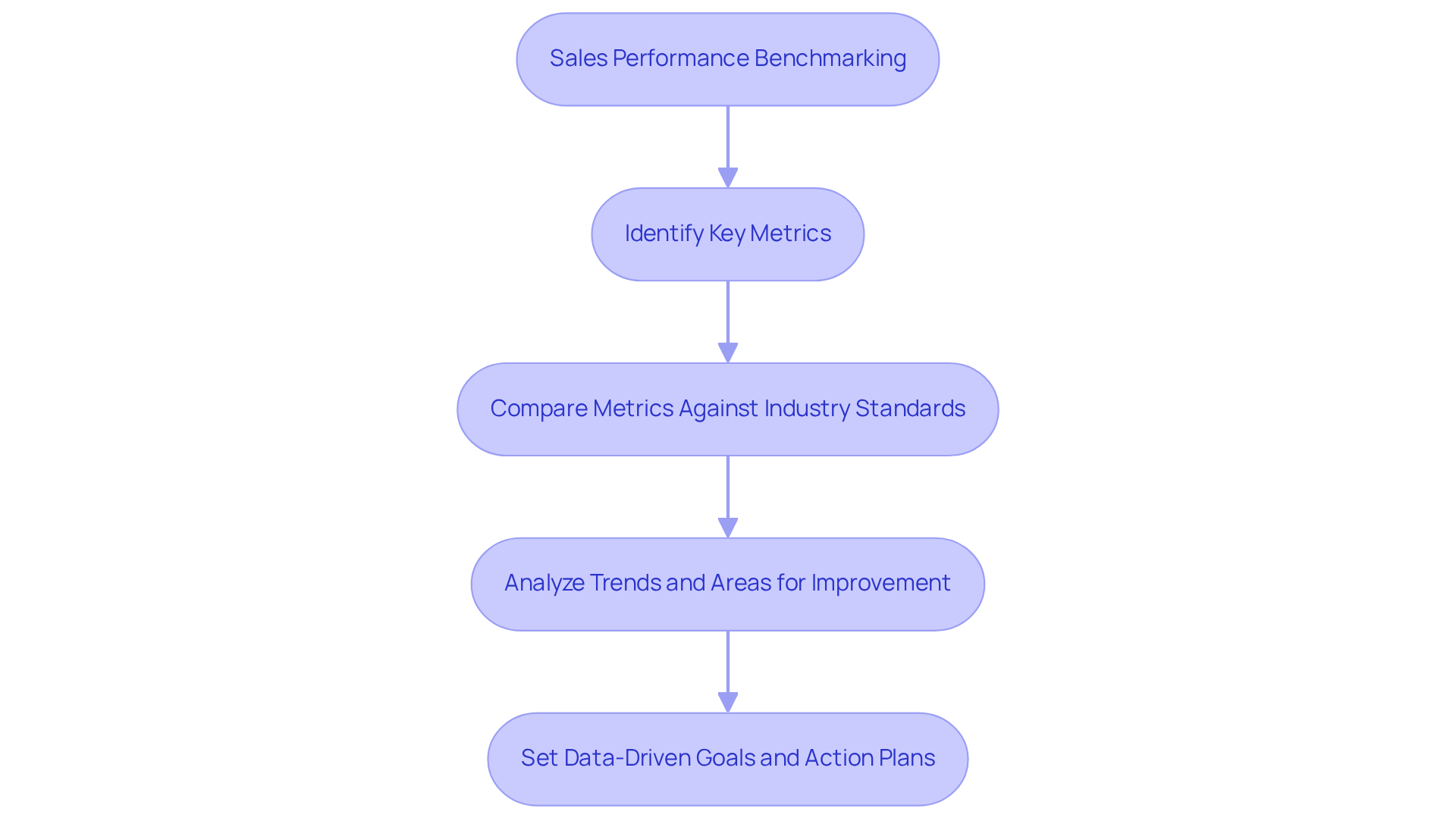
Conclusion
Navigating the B2B sales cycle effectively is crucial for small business owners who aspire to thrive in today's competitive market. By understanding and implementing key strategies—such as automated outreach, lead qualification, and effective closing techniques—you can streamline your processes and significantly enhance your conversion rates. Tools like Wayy.ai not only simplify outreach but also empower you to focus on building meaningful relationships with your prospects.
Throughout this article, we explored several essential phases of the B2B sales cycle, including:
- Prospecting
- Needs assessment
- Lead nurturing
Each stage requires a tailored approach to ensure that your prospects are engaged and guided toward making a purchase decision. By emphasizing the importance of personalization, overcoming objections, and nurturing leads, you can achieve higher engagement and conversion rates, ultimately driving revenue growth.
In conclusion, the journey through the B2B sales cycle demands attention to detail and a proactive approach. By leveraging technology and adopting effective strategies, you can not only improve your sales outcomes but also foster long-term relationships with your clients. We encourage you to embrace these insights and consider how implementing these strategies can transform your sales performance, paving the way for sustained success in the ever-evolving landscape of B2B commerce. Together, we can achieve success.
Frequently Asked Questions
What is Wayy.ai and how does it help small businesses?
Wayy.ai is a platform that uses AI technology to automate the outreach process for small businesses, enabling them to focus on their core operations. It helps establish over 60 target client connections each month, saving time and increasing the effectiveness of outreach efforts.
How much can automated outreach improve response rates?
Automated follow-ups through Wayy.ai can raise response rates by an impressive 250%, significantly enhancing engagement with potential clients.
What are the main benefits of using Wayy.ai for B2B sales?
The main benefits include improved revenue performance, increased engagement rates, and the ability to connect with prospects quickly. Prospects reached within five minutes are ten times more likely to convert.
What is the cost of subscribing to Wayy.ai?
The subscription plan for Wayy.ai is priced at $99 monthly, offering an economical solution that can pay for itself through improved prospect generation and client connections.
What are the key stages of the B2B sales cycle?
The key stages of the B2B sales cycle include prospecting, lead qualification, needs assessment, proposal, negotiation, and closing. Each stage requires tailored strategies to guide prospects toward making a purchase decision.
How does Wayy.ai assist in the prospecting stage?
Wayy.ai automates the prospecting process, helping small enterprises identify potential clients and establish over 60 connections each month, which can alleviate the challenges faced in outreach.
What is involved in the lead qualification stage?
Lead qualification involves assessing the potential of identified prospects based on criteria such as budget, authority, need, and timeline. Engaging decision-makers early can help reduce the sales cycle.
Why is needs assessment important in the B2B sales cycle?
Needs assessment is crucial because it involves understanding the unique needs of each prospect, which informs the proposal and helps tailor the approach to meet those needs effectively.
What should a compelling proposal include?
A compelling proposal should directly address the prospect's specific needs and include personalized content, as 84% of B2B decision-makers begin their buying journey with a referral.
What strategies are effective during the negotiation phase?
Effective negotiation strategies include persistent follow-ups, ideally reconnecting within 24 hours of initial outreach, and addressing any pricing and terms discussions to maintain engagement.
What are the key elements of closing a sale?
Closing a sale involves finalizing the deal by addressing any last-minute objections and reinforcing the value proposition to ensure the prospect feels confident in their decision.




